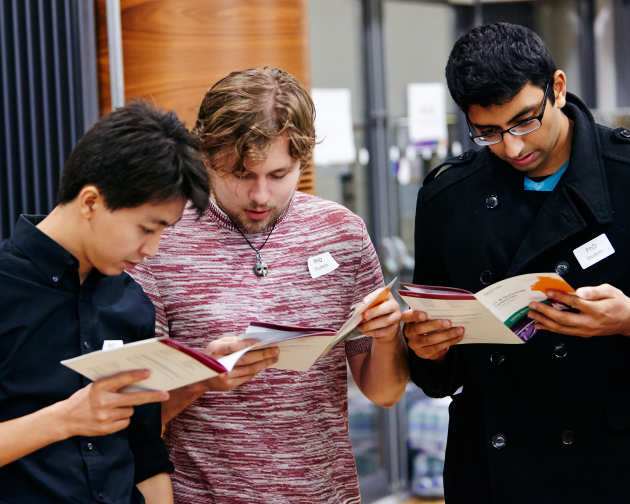 Choosing a college comes down to so many different factors – the fields of study they offer, the extracurricular activities, the football team, even the dorm room amenities. At the root of it all is a good story. Students choose a school based on the story they want to create for themselves about their college years.
Choosing a college comes down to so many different factors – the fields of study they offer, the extracurricular activities, the football team, even the dorm room amenities. At the root of it all is a good story. Students choose a school based on the story they want to create for themselves about their college years.
For college recruiters, this idea of storytelling plays into their marketing strategy in a tangible way.
“Thousands — and sometimes hundreds of thousands — of dollars are riding on the impressions that these recruiters make. Nobody is spouting off web addresses during these presentations. It’s all print,” explains Sandy Hubbard in The Print Media Center.
She relates some of the storytelling techniques she’s seen in her volunteer work at the college center in her local high school.
“The Columbia University recruiter tells about how, in winter, the trees on campus are wrapped with little white lights,” she writes. “Before the holidays, he explains, there’s a huge bonfire that brings everyone together, with hot cocoa all around. He paints a mesmerizing mental picture. Then he hands around printed booklets filled with campus photos.”
Hubbard watches as the kids leave the presentation and head back to class, clutching their booklets and browsing through them with friends. For a few magical minutes, the smartphones are forgotten. The engagement is real. The college is reaching its target audience in a very tangible, very powerful way that builds trust and connection.
“In fact, when students inevitably ask about campus life, the recruiters keep the focus tight. No mention of photos, Instagram or Pinterest. No pointing to videos on Periscope, Blab or YouTube. Nope. No digital distractions,” she explains.
The story is made real – and made portable – in print. And because it’s in print, it automatically carries more psychological value for the kids. Print has, in fact, become a secret weapon in higher education marketing. College marketing execs like Donna Lehmann of Fordham University realize that reaching their digitally savvy audience requires something to break through. Often that means reaching through in print.
“Print is tactile. Print invites you to linger,” Lehmann noted in a post in Inside Higher Ed. “Print can be tucked away conveniently and pulled out again and again. Print can be framed and hung on your wall. And these sentiments don’t seem to be generational.”
That’s not to say that colleges are handing out full admissions catalogs to everyone in the audience. Save the hefty (and more expensive) catalogs for the clearly interested lead, but don’t overlook the value of a well-printed brochure on College Day, or a direct mail piece to a highly targeted list. The ROI potential there can be significant. A good story, told authentically, will always be welcome. And it makes for great content when the creators focus on the story, and not on the brand, as Molly DeWolf wrote in a post about the tricky business of brand storytelling.
“If a story is moving, no one is going to care that it’s brought to you by a brand. Rather, they’re going to be happy the brand brought it to them,” she explains.
Your younger audience members still love print, and if you hope to garner their full attention – even for just a few minutes – print helps make that magic.
